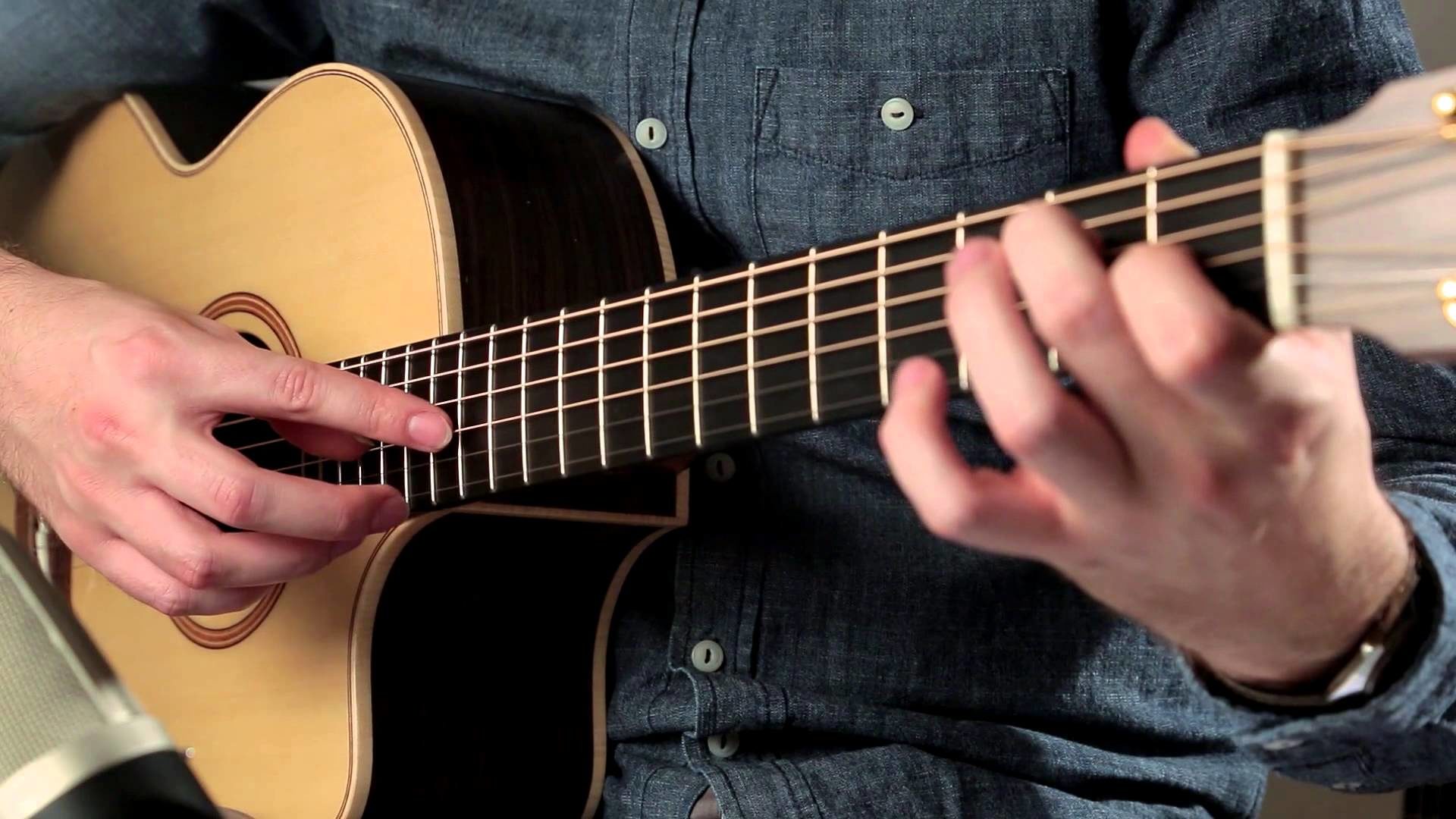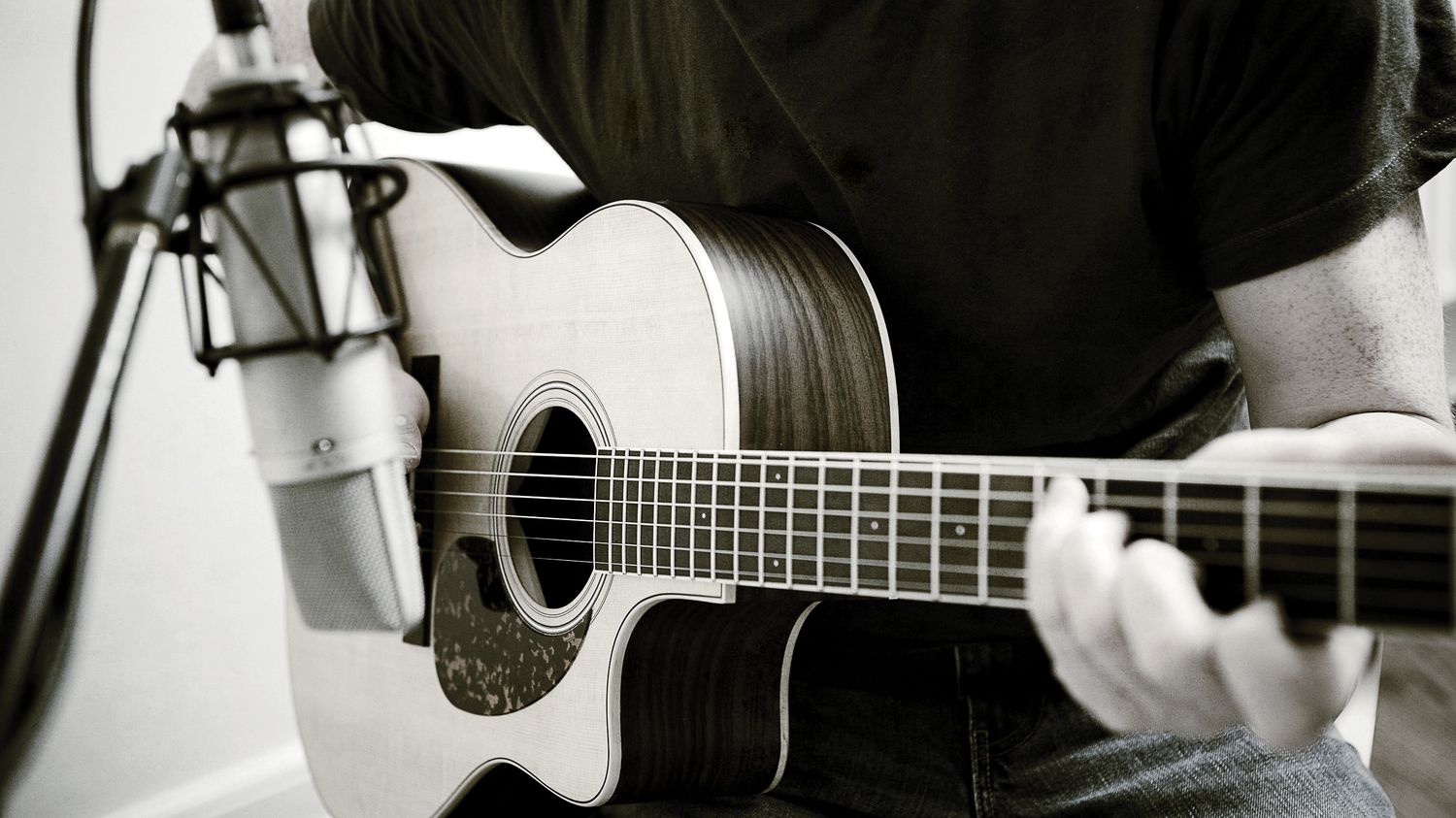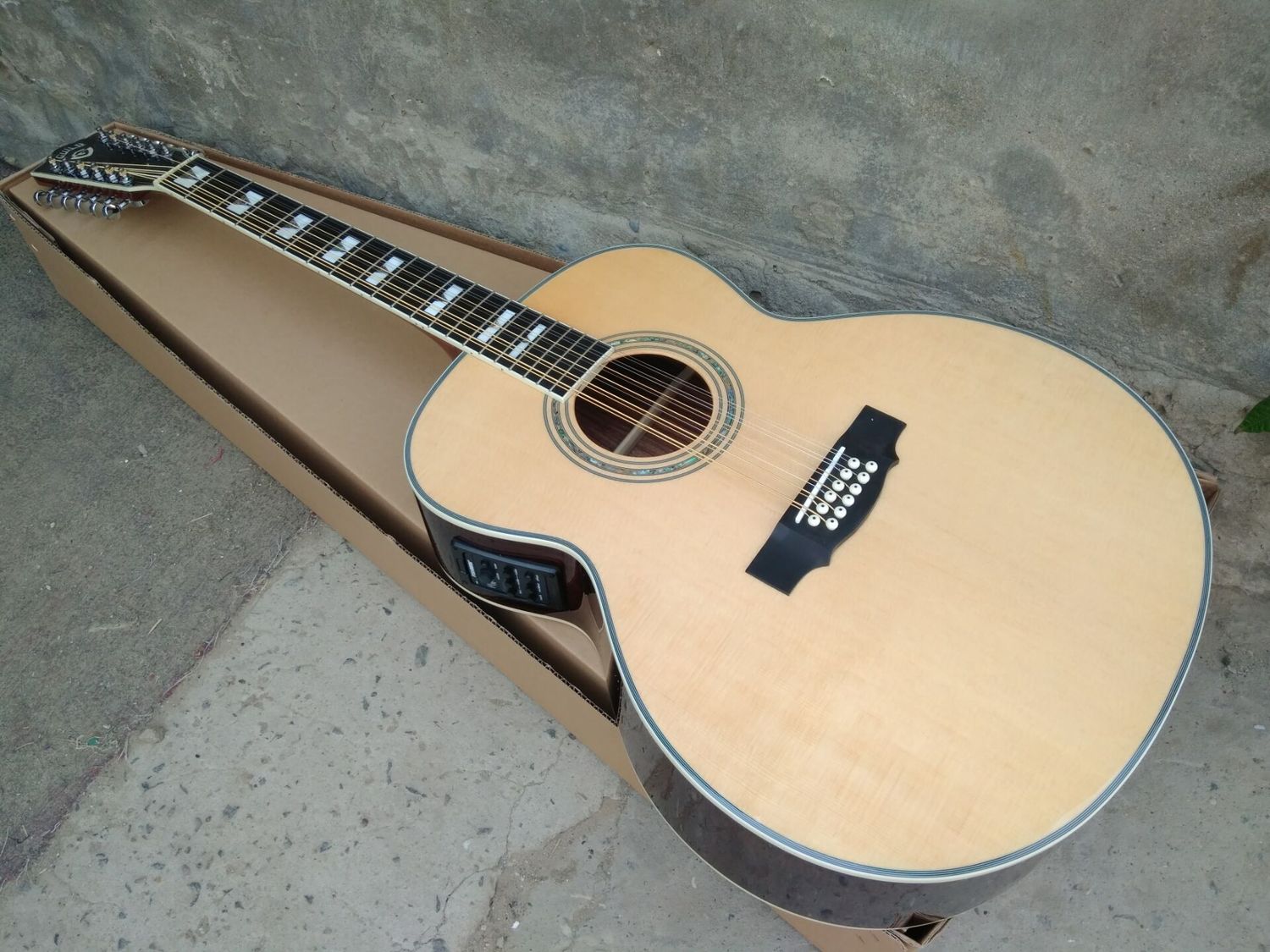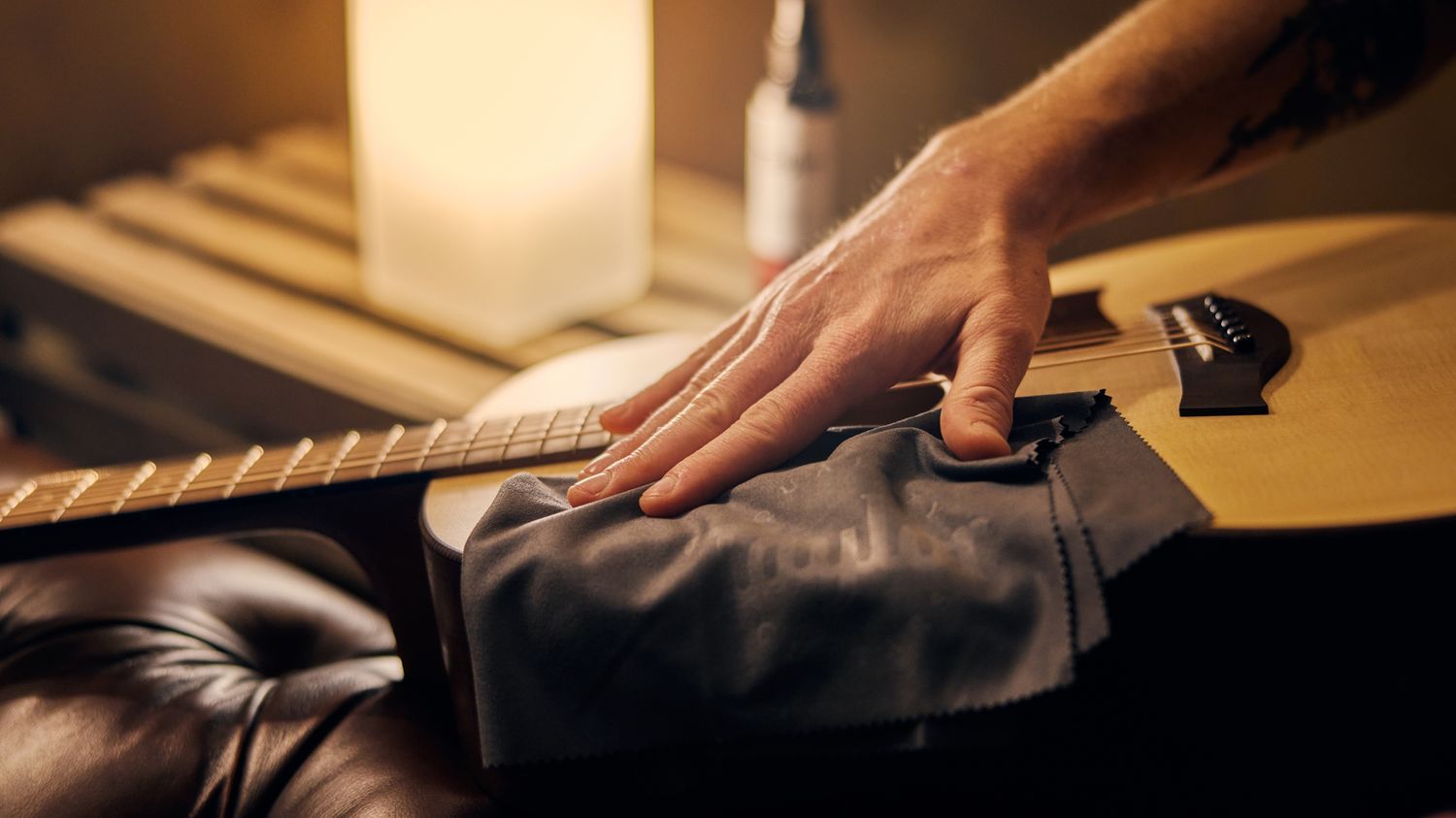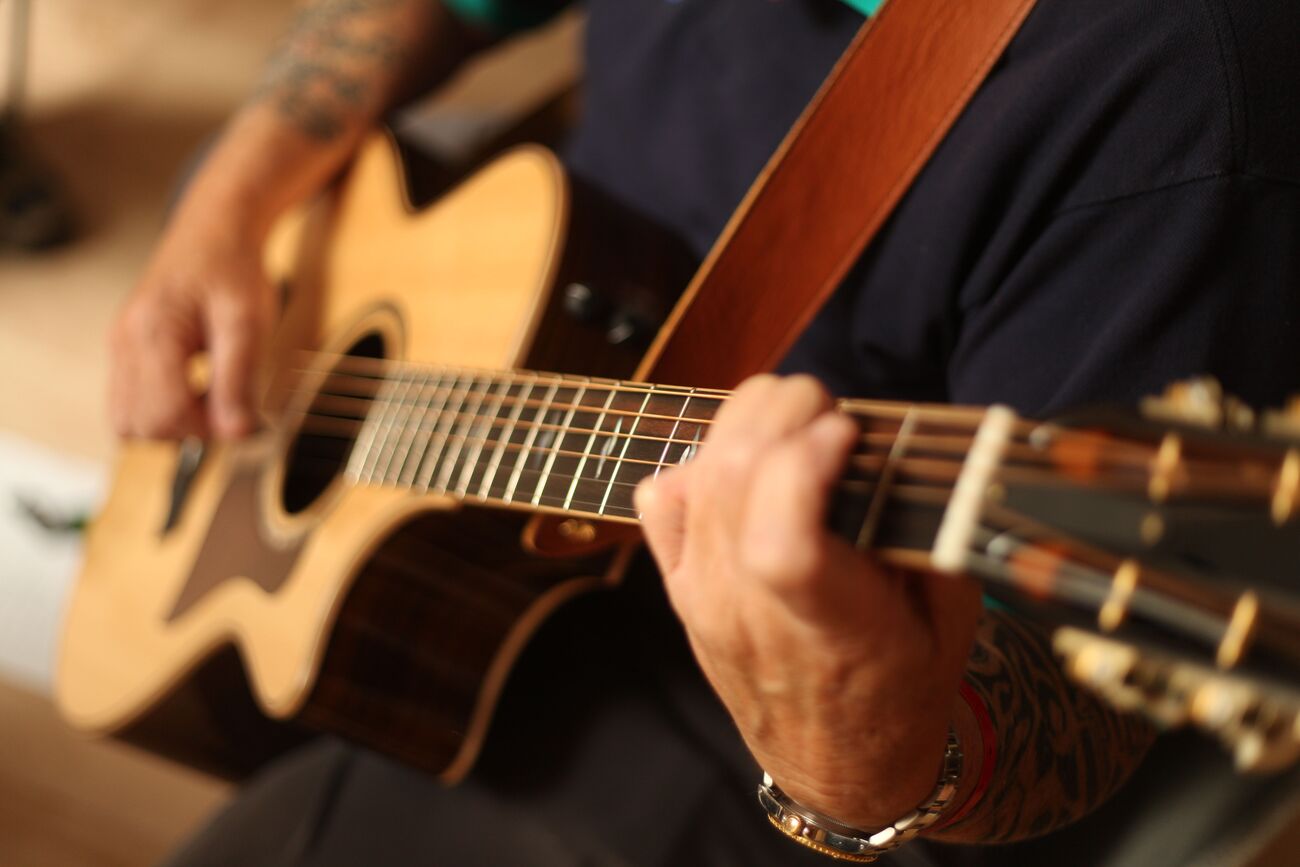Home>Instruments>Guitar>How To Intonate An Acoustic Guitar


Guitar
How To Intonate An Acoustic Guitar
Published: February 13, 2024
Learn how to intonate your acoustic guitar for perfect pitch and tuning. Our step-by-step guide will help you achieve optimal guitar performance.
(Many of the links in this article redirect to a specific reviewed product. Your purchase of these products through affiliate links helps to generate commission for AudioLover.com, at no extra cost. Learn more)
Table of Contents
Introduction
Intonation is a critical aspect of maintaining an acoustic guitar's optimal playability and sound quality. It refers to the accuracy of the instrument's pitch across the fretboard. Proper intonation ensures that every note rings true and in harmony with the entire fretboard, allowing for melodious chords and precise soloing. As a guitarist, understanding and mastering the intonation process is key to achieving a balanced and harmonious sound.
When an acoustic guitar is not properly intonated, the notes played higher up on the neck may sound sharp or flat, even if the open strings are perfectly tuned. This discrepancy can lead to frustration for the player and a lackluster listening experience for the audience. Fortunately, intonating an acoustic guitar is a manageable task that can be accomplished with the right tools, knowledge, and attention to detail.
In this comprehensive guide, we will delve into the nuances of intonating an acoustic guitar, covering the significance of intonation, the essential tools required, and a step-by-step intonation process. By following these instructions, you can effectively maintain your acoustic guitar's intonation, ensuring that it remains in tune and produces harmonious tones across the entire fretboard. Let's embark on this intonation journey and unlock the full potential of your acoustic guitar.
Importance of Intonation
Intonation holds immense significance in the realm of acoustic guitar playing. It directly impacts the instrument’s overall sound quality, playability, and the musician’s ability to express themselves musically. Here are several key reasons why intonation is crucial:
- Accurate Pitch: Proper intonation ensures that each note played on the guitar resonates at the correct pitch. This is vital for creating harmonious chords and melodies, allowing the guitarist to convey the intended musical expression.
- Consistent Sound: Well-intonated guitars produce consistent tones across the fretboard. This consistency is essential for maintaining a balanced sound during performances and recordings.
- Enhanced Playability: Good intonation contributes to the guitar’s playability, making it easier for the musician to play complex chords and execute intricate solos with precision.
- Listening Experience: Properly intonated guitars provide a more enjoyable listening experience for both the player and the audience. It ensures that the music is free from jarring, out-of-tune notes that can detract from the overall performance.
- Professionalism: For performing musicians, maintaining proper intonation demonstrates a commitment to professionalism and attention to detail. It reflects a dedication to delivering high-quality musical performances.
Without proper intonation, the guitar’s sound may suffer from dissonance and inconsistency, hindering the musician’s ability to fully express their musical ideas. Additionally, poorly intonated guitars can lead to frustration and a lack of confidence in the instrument’s capabilities.
Understanding the importance of intonation empowers guitarists to prioritize this aspect of instrument maintenance, leading to improved sound quality and a more satisfying playing experience. With this understanding in mind, let’s explore the tools necessary for intonating an acoustic guitar.
Tools Needed
Intonating an acoustic guitar requires a specific set of tools to ensure precision and accuracy throughout the process. Here are the essential tools needed for intonating an acoustic guitar:
- Electronic Tuner: An accurate electronic tuner is indispensable for intonating a guitar. It allows the guitarist to precisely tune each string to the correct pitch, serving as the foundation for the intonation adjustments.
- Screwdriver Set: A set of screwdrivers, including both Phillips and flat-head varieties, is necessary for adjusting the saddle position and length on the bridge of the acoustic guitar.
- Capo: A capo is useful for fretting the strings at different positions on the neck, facilitating the comparison of fretted notes with open string pitches during the intonation process.
- String Winder and Cutter: These tools aid in removing old strings and installing new ones, ensuring that the string-changing process is efficient and convenient.
- Measuring Tool: A precise measuring tool, such as a ruler or feeler gauges, is essential for determining the correct distance between the strings and the frets at various points along the fretboard.
- Clean Cloth: Keeping a clean cloth on hand is helpful for wiping down the guitar and removing any debris that may interfere with the intonation process.
Having these tools readily available will streamline the intonation process and enable the guitarist to make accurate adjustments to the instrument. With the necessary tools at your disposal, you are well-prepared to embark on the journey of intonating your acoustic guitar. In the following section, we will delve into the step-by-step process of intonating an acoustic guitar, empowering you to achieve optimal playability and tonal quality.
Steps to Intonate an Acoustic Guitar
Intonating an acoustic guitar involves a series of precise adjustments to ensure that each string produces accurate pitches across the fretboard. Follow these step-by-step instructions to intonate your acoustic guitar effectively:
- Prepare the Guitar: Begin by installing a fresh set of strings on your acoustic guitar. New strings are essential for achieving accurate intonation, as old and worn strings may produce inconsistent results.
- Tune the Guitar: Use an electronic tuner to tune all strings to their standard pitches (EADGBE). Ensure that the open strings are perfectly in tune before proceeding with the intonation adjustments.
- Check the 12th Fret Harmonic: Play the harmonic at the 12th fret of each string and compare it to the fretted note at the 12th fret. If the fretted note is sharp or flat in comparison to the harmonic, intonation adjustments are needed.
- Adjust the Saddle: Using a screwdriver, make precise adjustments to the saddle position for each string. To correct sharp intonation, the saddle should be moved slightly away from the neck, while flat intonation requires the saddle to be moved closer to the neck.
- Retune and Recheck: After making adjustments to the saddle position, retune the string and recheck the 12th fret harmonic against the fretted note. Repeat the adjustment process as needed until the harmonic and fretted notes align perfectly in pitch.
- Repeat for Each String: Intonate each string individually, ensuring that the harmonic and fretted notes are in harmony across the entire fretboard. Patience and attention to detail are crucial during this process.
- Test Chords and Playability: Once the intonation adjustments are complete, test various chords and play scales across the fretboard to ensure that the guitar produces consistent and harmonious tones at every position.
By following these steps meticulously, you can effectively intonate your acoustic guitar, resulting in improved playability and tonal accuracy. Remember that the intonation process may require fine adjustments and careful observation to achieve optimal results. With your acoustic guitar now properly intonated, you can enjoy a balanced and harmonious playing experience across the entire fretboard.
Conclusion
Intonating an acoustic guitar is a fundamental aspect of maintaining its optimal performance and ensuring that it produces harmonious tones across the fretboard. By understanding the significance of intonation and following a systematic approach to the intonation process, guitarists can elevate their playing experience and achieve greater musical expression. The essential tools, including an electronic tuner, screwdrivers, capo, and measuring tool, equip guitarists with the means to make precise adjustments to the instrument’s intonation.
Proper intonation contributes to accurate pitch, consistent sound, enhanced playability, and a more enjoyable listening experience. It reflects a commitment to professionalism and musical excellence, allowing guitarists to convey their musical ideas with clarity and precision. Through the step-by-step intonation process, which involves preparing the guitar, tuning, checking the 12th fret harmonic, adjusting the saddle, and meticulous rechecking, guitarists can achieve optimal intonation and a balanced sound throughout the fretboard.
With the acoustic guitar now properly intonated, musicians can confidently explore a wide range of musical possibilities, from intricate solos to melodious chords, knowing that their instrument is finely tuned and ready to deliver exceptional performances. By prioritizing intonation and embracing the process with patience and attention to detail, guitarists can unlock the full potential of their acoustic guitars, creating captivating music that resonates with clarity and precision.
Intonating an acoustic guitar is not merely a technical task; it is a journey that allows guitarists to connect with their instruments on a deeper level, nurturing a harmonious relationship between player and guitar. As you embark on this intonation journey, may your acoustic guitar resonate with clarity, precision, and musical excellence, inspiring countless moments of musical creativity and expression.




